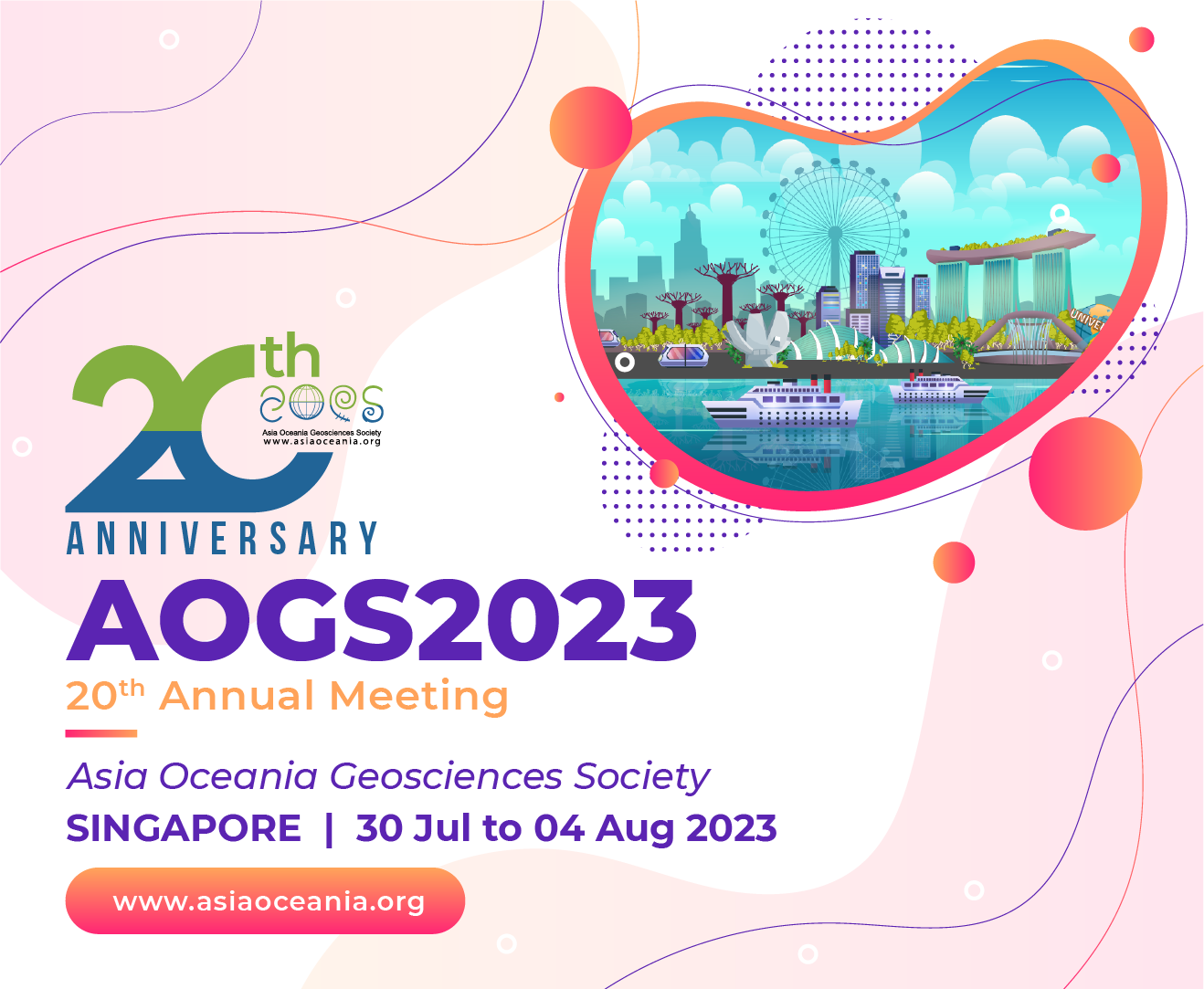
Workshops
Note: Time stated is based on Singapore Standard Time and is 8 Hours ahead of GMT (+8:00)
03 August (Thursday) | 8:15AM to 12:20PM | MR335
03 August (Thursday) | AM Session
| Conveners: | Laura LORENZONI, NASA Earth Science Division Jeremy WERDELL, NASA Goddard Space Flight center (GSFC) |
| Speakers: |
Jack KAYE, NASA Earth Science Division Jeremy WERDELL, NASA Goddard Space Flight Center Lachlan MCKINNA, NASA Goddard Space Flight Center Laura LORENZONI, NASA Earth Science Division Meng GAO, NASA Goddard Space Flight Center Natasha SADOFF, NASA Goddard Space Flight Center Richard XU Sang-Ho YUN, Nanyang Technological University Steve YIM, Nanyang Technological University Victor KUWAHARA, Soka University |
| Participation: | Up to 50 Pax |
| Fee: | SGD10/person |
| Associated Sections: | AS, BG, OS, PS, ST |
The Plankton, Aerosol, Cloud, ocean Ecosystem (PACE) mission will continue NASA’s multi-decade record of satellite ocean color, cloud, and aerosol particle observations. Anticipated to launch in early 2024, PACE is a strategic climate continuity mission that will enable new insight into oceanographic and atmospheric responses to Earth's changing climate. PACE’s primary instrument is a global spectrometer that spans the ultraviolet to near-infrared region in 2.5 nm steps and also includes seven discrete shortwave infrared bands from 940 to 2260 nm. This leap in technology will enable improved understanding of aquatic ecosystems and biogeochemistry, as well as provide new information on phytoplankton community composition and improved detection of algal blooms. This, in combination with its aerosol and cloud measurements, will enable improved assessment of aerosol impacts on ocean biology and chemistry. PACE data is anticipated to provide new and improved applications such as better quantification of Earth’s energy budget, more accurate forecasting of harmful algal blooms, aid fisheries management and monitor ocean health. To ensure that PACE data is of the quality needed for its different applications, there are a number of validation activities planned post-launch. This session will discuss the scientific and technological advances that the PACE mission brings to the community, the opportunities that exist to support calibration/validation, including synergistic in situ and satellite measurements, and the breadth of applications that will be enabled by PACE data, in particular focused on the AOGS region. It is anticipated that the PACE instrument suite will substantially advance studies of global biogeochemistry, carbon cycle, and aerosols/clouds in the ocean-atmosphere system.
Interested parties may sign up via MARS Registration Form from 21 March 2023 onwards. Sign-ups will close when maximum participant capacity is reached.
04 August (Friday) | 8:15AM to 12:20PM | MR335
04 August (Friday) | AM Session
| Conveners & Speakers: | Pawan GUPTA, NASA Goddard Space Flight Center (GSFC) Robert LEVY, NASA Goddard Space Flight Center (GSFC) |
| Participation: | 15 – 25 Pax Participants are required to bring their own laptops |
| Fee: | SGD10/person |
| Associated Sections: | AS, PS, ST |
The Moderate Resolution Imaging Spectroradiometer (MODIS) sensors aboard NASA’s Earth Observing Satellites (EOS) have been observing the earth-atmosphere system for more than two decades. Atmospheric aerosols (particulate matter) play an important role in the earth radiation budget and contribute to air pollution. Since its launch, the “dark-target” (DT) aerosol retrieval algorithm has been applied to MODIS to retrieve aerosol optical depth (AOD) and other aerosol properties on a global scale. The AOD data product has been extensively used for climate and air quality applications. The DT algorithm has been applied to a new generation of sensors such as Visible Infrared Imaging Radiometer Suite (VIIRS) on Suomi-NPP, and the Advanced Himawari and Baseline Imagers (AHI and ABI) on Himawari-8 and GOES-R. The application of a consistent algorithm on multiple Low Earth Orbiting (LEO) and GEOstationary (GEO) sensors is key for observing aerosols with high temporal and spatial resolution.
The AERONET (AErosol RObotic NETwork) project is a federation of ground-based remote sensing aerosol networks established by NASA and PHOTONS (PHOtométrie pour le Traitement Opérationnel de Normalisation Satellitaire; Univ. of Lille 1, CNES, and CNRS-INSU) and is greatly expanded by networks (e.g., RIMA, AeroSpan, AEROCAN, NEON, and CARSNET) and collaborators from national agencies, institutes, universities, individual scientists, and partners. For more than 25 years, the project has provided long-term, continuous, and readily accessible public domain database of aerosol optical, microphysical and radiative properties for aerosol research and characterization, validation of satellite retrievals, and synergism with other databases. The network imposes standardization of instruments, calibration, processing, and distribution.
The workshop will provide lectures and hands-on exercises. Lectures will be about fundamentals of satellite atmospheric aerosol datasets, introduction to AERONET datasets, and best research practices on spatiotemporal collocation of space and ground datasets for validation studies. Hands-on exercises will be geared towards accessing data, spatiotemporal collocation, and validating against ground measurements.
All activities will use free or open-source software tools such as Python.
Interested parties may sign up via MARS Registration Form from 21 March 2023 onwards. Sign-ups will close when maximum participant capacity is reached.
